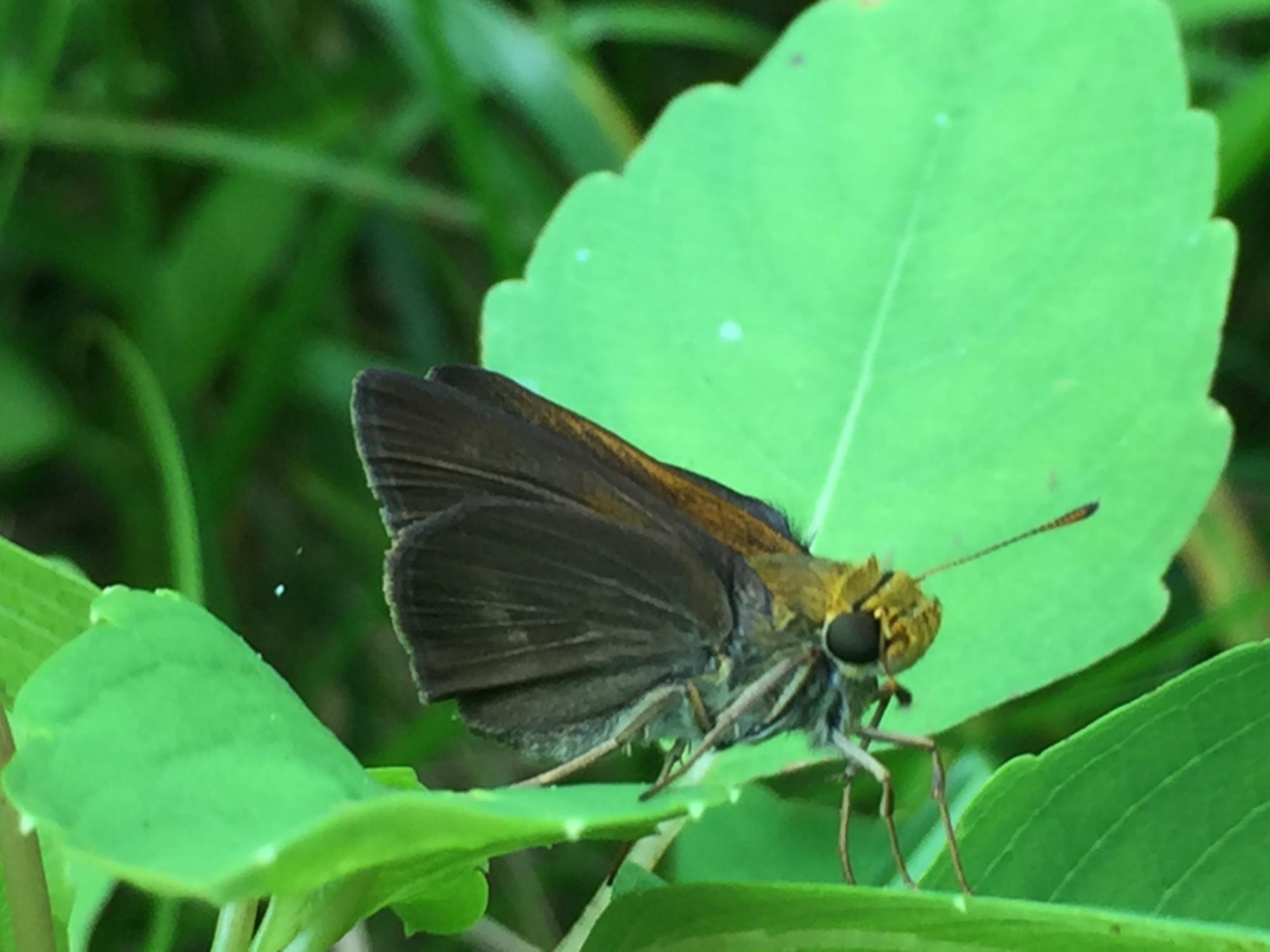DUN SKIPPER, LITTLE GLASSYWING, and NORTHERN BROKEN-DASH
Dun Skipper. Males of this species usually have unmarked chocolate-brown wings.
Female Dun Skippers can sometimes have a few faint white spots on their wings.
Dun Skippers are usually unmarked brown below, but they can occasionally have a faint band of small white dots. A fresh Dun Skipper will sometimes have a golden color on its head.
Little Glassywings can be distinguished from Dun Skippers by the large white squares on their wings.
Little Glassywings usually have a band of white spots on the ventral surface of their wings (sometimes faint). Also, Little Glassywings have a white-colored patch on their antennae, just below the antenna club. They fly from June through August.
The butterfly at left is a Northern Broken-Dash. These skippers are less common than Dun Skippers and Little Glassywings in our area. Northern Broken-Dashes usually have a stronger spot band on the undersurface of their wings. This individual was photographed at Cox Arboretum on August 16, 2020.

This Dun Skipper looks reddish-brown in this light, but Dun Skippers usually appear darker brown.
Northern Broken-Dash with its wings spead. This is the same individual as above. Notice that the spots are narrow, rectangular, and elongated, compared with the large square spot on the Little Glassywing further above.
This Dun Skipper is more faded than the very fresh individual above. Dun Skippers fly from June through September.
Another Northern Broken-Dash. This one was photographed on July 4, 2023, in Beavercreek.